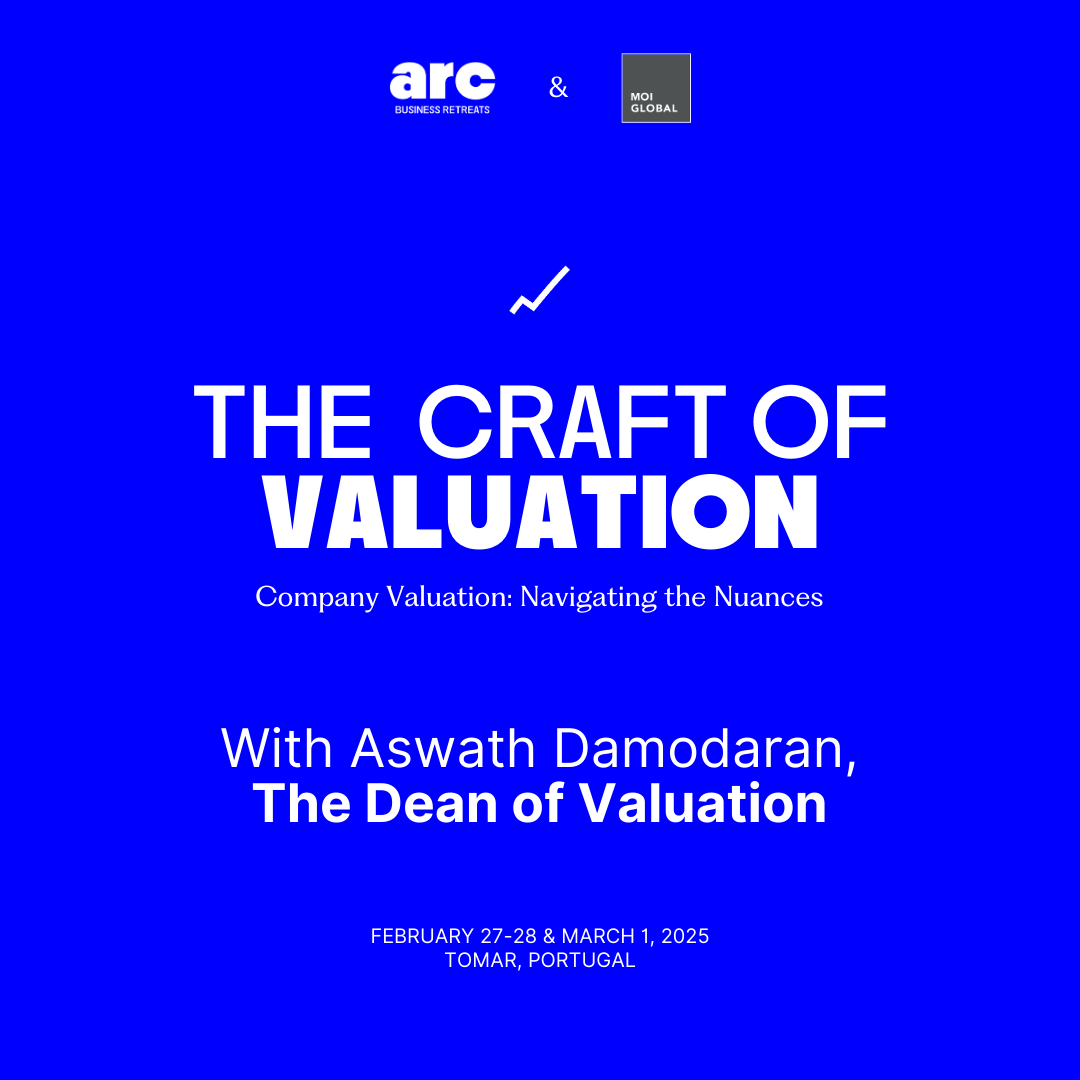
Editor’s note: Alex Gilchrist is supporting the organization of this wonderful event. MOI Global has no control over the contents of the seminar, nor does MOI Global receive any compensation for recommending this event.
This exclusive two-day seminar, presented by Arc and MOI Global and led by Professor Aswath Damodaran, on the picturesque island of Mouchão in the medieval town of Tomar in Portugal, will be an immersive event that will explore key valuation concepts such as estimating cash flows, growth rates, and discount rates, using real-world companies to address common challenges.
The program is crafted to provide value for both senior and junior participants alike, ensuring that all attendees—regardless of experience—can deepen their understanding of these foundational concepts.
Overview by Aswath Damodaran:
You may ask if this is for senior people or juniors. I just say that all valuation is basic and what people take out of it will vary depending on whether they are junior or senior. In short, this is designed for a very broad and diverse audience.
There are as many models for valuing stocks and businesses as there are analysts doing valuations. The differences across these models are often emphasized and the common elements are generally ignored. In this two-day seminar, I will start with the estimation issues and basics of intrinsic valuation, talking about the big picture perspective that must be brought to the estimation of cash flows, growth rates and discount rates. I will use real companies as lab experiments to bring home the estimation questions that have to be dealt with in valuation. Once I have the foundation laid, I will launch into an assessment of the loose ends in valuation and talk about valuing control, synergy and cross holdings in companies. Then, we will move on to what I term the dark side of valuation, valuing difficult-to-value companies across sectors (intangible assets, cyclical and financial service companies) and across the life cycle (small private, young growth, mature transition and declining/distressed companies). In the last part of the session, we will cover the use and misuse of multiples in relative valuation.
The objective of the training is to provide the fundamentals of each approach to valuation, together with limitations and caveats on the use of each, as well as extended examples of the application of each. At the end of the seminar, participants should be able to:
- Value any kind of firm in any market, using discounted cash flow models (small and large, private and public)
- Value a firm using multiples and comparable firms,
- Analyze and critique the use of multiples in valuation,
- Value “problem” firms, such as financially troubled firms and start up firms,
- Estimate the effect on value of a restructuring a firm
The first day of the seminar will establish the fundamentals of discounted cash flow valuation, with a special emphasis on the estimation issues that come up when estimating discount rates, cash flows and expected growth. It will look at the choices in terms of DCF models and how to pick the right model to value a specific firm. In addition, we will use the basic structure of the discounted cash flow model to take a comprehensive look at how to enhance firm value. In addition, we will focus on a myriad of estimation questions related to cash flows, discount rates and growth rates. We will end the day by looking at the terminal value in DCF valuation: how best to estimate it and common errors made in computation.
The second day’s discussion will begin with an analysis of what we call the loose ends in valuation – how to deal with cash, cross holdings and other assets, what the value of control, synergy and liquidity are and how best to deal with employee and management equity and option grants. It will also then extend into the discussion of difficult to value companies. The last part of the day will be dedicated to relative valuation. A range of multiples that are used currently in valuation, from earnings multiples (such as PE, Value/EBIT, Value/EBITDA) to sales multiples (Revenue/Sales, Price/Sales), will be discussed and compared. The relationship between multiples and discounted cash flow models will be explored, and the notion of a “comparable” firm will be examined. (What is a comparable firm? How do you adjust for differences in growth, risk and cash flow capabilities across firms, when estimating multiples?) Finally, the special difficulties associated with comparing multiples across time, and across markets, will be highlighted.
(Click “Reserve – Invitation Only”. Use password “aswath”. Under Referral Code, enter “MOI Global”.)
Editor’s note: Alex Gilchrist is supporting the organization of this wonderful event. MOI Global has no control over the contents of the seminar, nor does MOI Global receive any compensation for recommending this event.


About The Author: Alex Gilchrist
Alex Gilchrist is a London-based research associate at MOI Global.
More posts by Alex Gilchrist